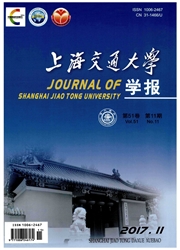

 中文摘要:
中文摘要:
对磨削、铣削加工得到的淬硬钢SKD11表面完整性进行了研究.通过对比干磨削和干铣削加工工件表面层的金相组织.发现干铣削时,铣刀后刀面磨损引起的铣削温度升高对工件表面完整性有很大的影响.随着加工温度升高,工件表面逐渐产生回火马氏体,这是造成工件表面硬度下降的主要原因.进一步的试验表明,如果选用合适的刀具和加工参数,可以得到较好的表面完整性;如果采用较小铣刀的磨钝标准可以避免出现回火马氏体.对淬硬钢进行精加工时,以铣代磨是完全可行的.
 英文摘要:
英文摘要:
The surface integrity of workpiece surface produced by grinding and milling were investigated. The examinations of the metallurgic structure of the surface layers in dry milling/grinding show a vivid metallurgical alterations, which indicate that the cutting temperature induced mainly by the flank wear plays a tremendous impact on the surface integrity. Tempered martensite was gradually generated as the cutting temperature increased, which is the main cause of the decrease in the hardness. And the further experimentations reveal that the preferable surface integrity can be obtained if the proper milling cutter and cutting parameter as well as a small wear criterion are adopted to avoid the advent of tempered martensite. The research results point out the feasibility of taking milling as the finish machining process instead of grinding in machining hardened steel with high efficiency.
 同期刊论文项目
同期刊论文项目
 同项目期刊论文
同项目期刊论文
 Statistical research on the effects of cutting edge preparation on face milling of austenitic stainl
Statistical research on the effects of cutting edge preparation on face milling of austenitic stainl 期刊信息
期刊信息
